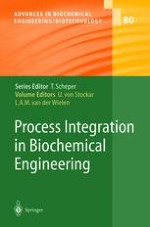2003 | Buch
Process Integration in Biochemical Engineering
herausgegeben von: Prof. Dr. Urs. von Stockar, Prof. Dr. L. A. M. van der Wielen, A. Bruggink, J. M. S. Cabral, S.-O. Enfors, P. Fernandes, M. Jenne, K. Mauch, D. M. F. Prazeres, M. Reuss, S. Schmalzriedt, D. Stark, U. von Stockar, A. J. J. Straathof, L. A. M. van der Wielen
Verlag: Springer Berlin Heidelberg
Buchreihe : Advances in Biochemical Engineering/Biotechnology
Enthalten in: Professional Book Archive
